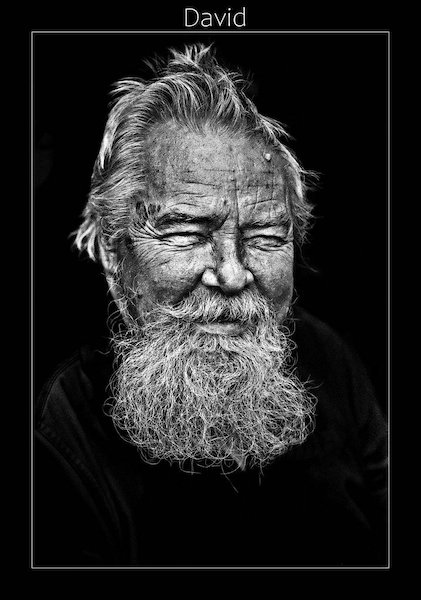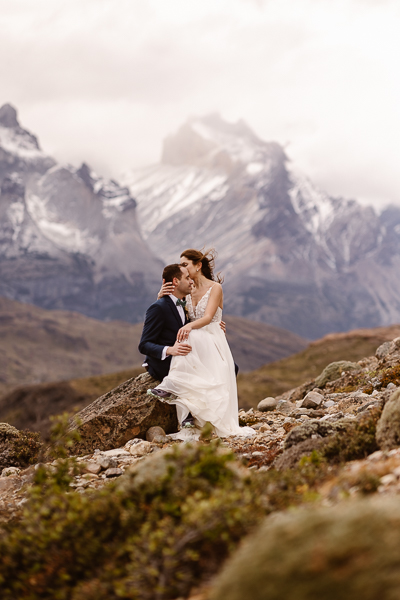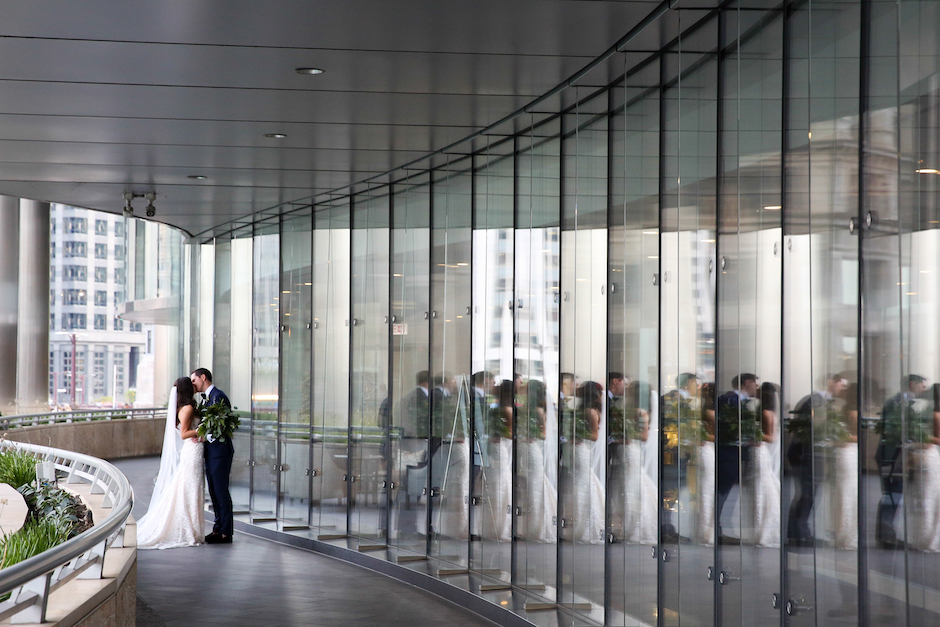Aaron Ruell, Moving Beyond "The Napoleon Dynamite Guy"
July 28, 2014
Imagine that a college friend asks you for a favor: Act in his low-budget indie film. Fast-forward a couple of years and suddenly you are the star of one of the biggest cult comedies of the last decade. Such was the life of photographer and director Aaron Ruell, who starred as Napoleon’s brother, “Kip,” in the 2004 breakout film Napoleon Dynamite. But being in front of the camera was never Ruell’s passion—from an early age, he dreamed of a career on the other side of the lens.
Like many photographers, Ruell’s interest in the medium began after taking a high school photo class. His interactions with the camera inspired a second passion that would soon take over the first: filmmaking. Ruell began writing, shooting, and, yes, acting in short films in his spare time.
Raised as a Mormon, he went off to Brigham Young University’s Media Arts program in Utah, set on becoming a film director (though he continued to photograph and even assembled a darkroom in his dorm bathroom). When a friend at BYU asked Ruell if he could help him out by acting in the feature film he was writing, Ruell said yes, with no thought as to where the film might go.
STUMBLING INTO PHOTOGRAPHY
During the course of Napoleon Dynamite’s production, it became apparent that directors Jared and Jerusha Hess would need production stills for publicity and festival submissions, like the Sundance Film Festival where Napoleon eventually ran. As there was no budget, Ruell volunteered, shooting stills of suburban absurdity with a tenderness that would become a hallmark of his later work.
The photos he shot were everywhere and grabbed the attention of advertising agencies, which started contacting him to photograph upcoming campaigns. He was suddenly pegged as a professional photographer and actor—both of which he had simply stumbled into. Ruell admits candidly that he wasn’t ready for it.
“I had no real background,” he says. “And I wasn’t willing to fake it. I didn’t want to step into a shoot and not know how to properly execute it.”
SKIPPING TOWN
Faced with film offers he had no interest in taking and advertising job offers that he didn’t feel ready for, Ruell and his wife skipped town to Europe with a single intention: to build a photography portfolio. Over the course of several months in Italy, Poland and the Czech Republic, Ruell shot an entire new book of still-life photos and portraits with his medium-format Hasselblad, which he used exclusively until a few years ago when he began mixing in a Canon 5D Mark II and Hasselblad H2.
When he returned, Ruell showed his portfolio to photo agencies and was picked up by Fox Creative (though he has spent most of his career with Giant Artists). With the help of his new representation, Ruell was hired for large campaigns, but no matter the project, he was always blunt about his style.
“What you see is what you’re going to get,” Ruell told the prospective agencies. “You’re hiring me to shoot how I shoot.”
As a photographer new to the industry, Ruell admits that it was a naive way to approach new clients, but he did it, he says, because he was essentially playing with house money. While negotiating photography campaigns, Ruell had already begun to establish himself as a commercial director as well, having just shot commercials for Comcast and Burger King. “I had nothing to lose,” Ruell says. “I figured that if either photography or commercial directing worked out, I’d be okay.”
FINDING HIS VOICE
In short order, Ruell shot print campaigns for T-Mobile, Citibank and Quaker Oatmeal. One of his most memorable campaigns was a texting public service announcement for LG, with the tagline “Before You Text, Give it a Ponder.” The ads featured trademark Napoleon-style deadpan humor, showing young men and women holding cellphones while stroking a thick beard. The photography is polished and colorful, like most of Ruell’s work, but it was clear that he was being typecast.
“I got pigeon-holed as the comedy guy,” explains Ruell. “Comedy is natural for me, but it’s not my go-to.”
He prefers his personal work: thoughtful, quiet character moments depicting slices of Americana. Ruell grew up on a horse ranch in the San Joaquin Valley in Central California, so his upbringing in a Middle America, blue-collar family is a heavy influence on his work.
With business booming on the directing side, Ruell scaled back his commercial photography to pursue photographic expression with no clients or deadlines. He was offered a publishing deal from Nazraeli Press, which gave him free rein to produce Some Photos, a cheekily-named collection of work shot through 2008.
After spending years as “the Napoleon Dynamite guy,” Ruell was ready to reveal who he really was as an artist.
PERFECTING THE PROCESS
Some Photos retains much of the quirk and deadpan humor of Ruell’s commercial work, with a dose of nostalgia and pathos. The images—bleached color still-lifes of orange couches, old TVs and other suburban detritus, and impeccable portraits of perfect suburbanites—clearly recall his upbringing. Ruell’s photos are meticulously crafted; every color matches, every detail lines up.
“My ideas always start with the face of someone I meet or see,” he says. “Then I feel like I need to create a world around them.”
If his photos look like film stills, it shouldn’t come as a surprise; he’s inspired by his time working with production designers and set builders. “There has always been a cohesive artistic crossover between directing and photography for me,” Ruell says. “What I shoot on the photography side mirrors what I work on in filmmaking.”
In 2010, Paper magazine asked Ruell to shoot a spread for its Fashion issue. While initially lukewarm on the idea, he told them he would do it if they could secure him a shoot in San Luis Obispo’s Madonna Inn, a landmark motel with 110 uniquely designed rooms. Ruell had been visiting it since childhood, and it’s exactly the type of kitschy Americana that he excels at depicting.
Ruell was given one full day to shoot the spread. He and his assistant sprinted with three strobes through 13 different shots in as many rooms as possible. For a cinematic look to his compositions, Ruell likes to use gaffers—lighting technicians for films—as assistants. On the fast-paced Madonna Inn shoot, having a gaffer helped Ruell experiment with numerous complex lighting setups that he could tweak until he had the perfect look. To expedite the process, Ruell and his assistant completely finished their compositions before bringing models on set.
“My style isn’t overly posed,” he explains. “Because of that, there’s not a lot for models to do. I see the models as a piece of the overall composition, which makes shooting quicker.”
WHAT’S NEXT
When Ruell directs commercials, he manages crews of up to 150 people and is usually completing a concept already designed by an agency. On a photo shoot, he works with a crew of maybe five people and has complete creative control. While he admits that managing a massive crew is challenging, his own high expectations for his photography make photo shoots more stressful.
“I get more satisfaction from shooting a great image than anything else,” says Ruell. “I have more control over the end product, but that’s what brings the pressure.”
Some Photos had gallery showings in Paris, Milan, Buenos Aires and New Orleans, after which Ruell picked up his longest running ad client, Old Spice. This year, coming out of a photography hiatus, Ruell signed a new book deal with Nazraeli, which is slated to arrive in the fall, and he’s secured exhibitions at two prominent galleries.
Ruell is as in demand as ever, but he insists on working at his own pace. “I can’t force it,” he says. “My work isn’t snapshots or quick moments. I can’t go at it every day and shoot. It’s just never been my style.”
Related Links:
Editor’s Pick: Matt Henry Stages ’60s America
Photographer You Should Know: Weronika Kosinska
Motion à la Mode: The Story of a Fashion Filmmaker




